 |
 |
 |
| |
"AMP" PREP Broadly Neutralizing Antibody Studies /
Next Generation PrEP / Tracking Global PrEP Use
|
| |
| |
There are 3 presentations reported here from HIVR4P & inks to the webcasts:
Of Note the Antibody PrEP Study ongoing is getting much attention
Looking Ahead: Next Generation of PrEP
Nyaradzo Mgodi
UZ-UCSF Collaborative Research Programme
Tracking Global Oral PrEP Provision: The Who, What, Where of Oral PrEP
Laura Fitch
AVAC, United States
Antibody Mediated Protection (AMP): Where Are We? Which Antibodies to Use and How Will We Know If Itīs Working?
Lynn Morris
National Institute for Communicable Diseases of the NHLS, South Africa
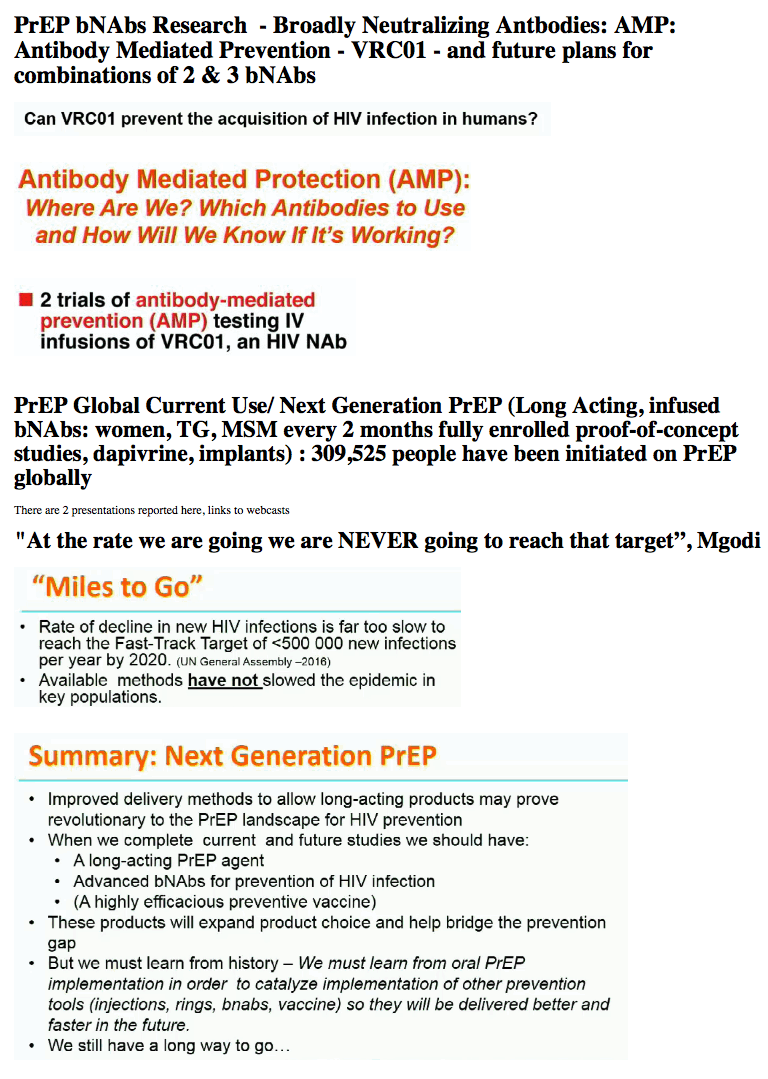
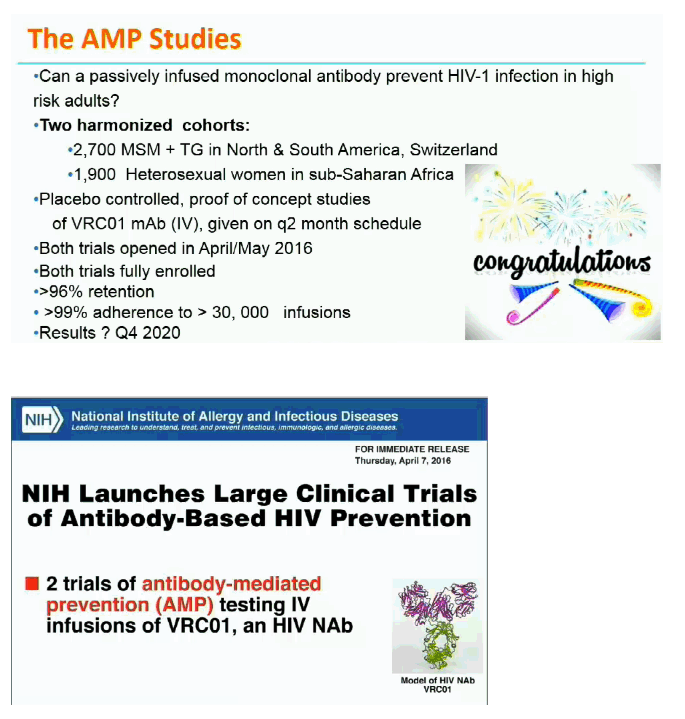
WEBCAST:
http://webcasts.hivr4p.org/console/player/40359?mediaType=slideVideo&&crd_fl=1&ssmsrq=1540498932508&ctms=5000&csmsrq=1177
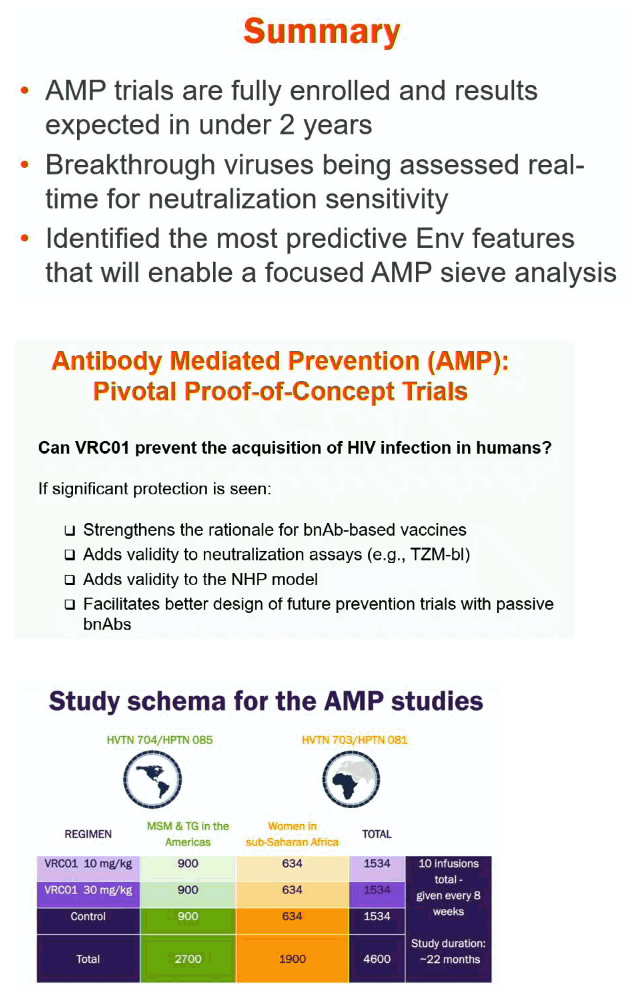
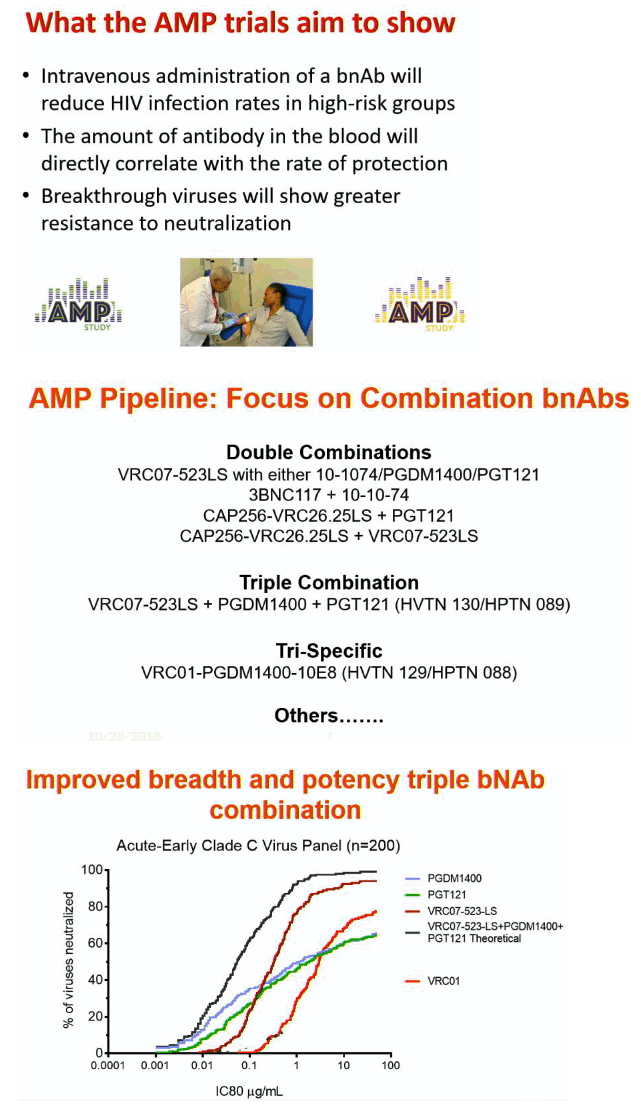
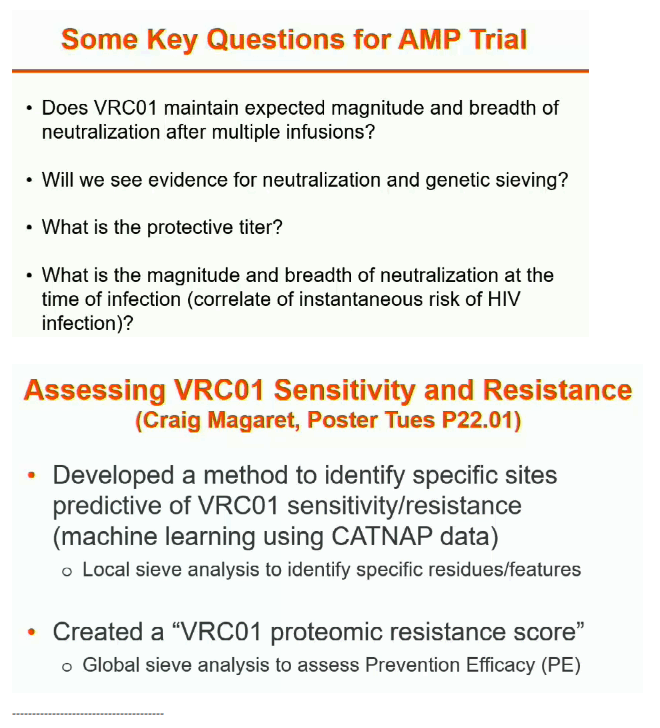
--------------------------------------
Looking Ahead: Next Generation of PrEP
Nyaradzo Mgodi
UZ-UCSF Collaborative Research Programme
Tracking Global Oral PrEP Provision: The Who, What, Where of Oral PrEP
Laura Fitch
AVAC, United States
Antibody Mediated Protection (AMP): Where Are We? Which Antibodies to Use and How Will We Know If Itīs Working?
Lynn Morris
National Institute for Communicable Diseases of the NHLS, South Africa
OA04.01 - Tracking Global Oral PrEP Provision: The Who, What, Where of Oral PrEP
Laura Fitch1, Jack Clancy1, Emily Donaldson1, Elizabeth Gardiner1, Mitchell Warren1 1AVAC, United States Background: To date, 43 regulatory agencies have approved oral TDF/FTC for PrEP and 68 countries have begun offering PrEP in some form. The decentralized nature of programmatic data has proven detrimental to assessing gaps, learning from projects and programs, and tracking progress.
Methods: AVAC began tracking global PrEP initiation in 2014 to inform product implementation and advocacy efforts. The global PrEP tracker includes a comprehensive database of information on ongoing and planned PrEP demonstration projects, implementation initiatives and national programs. Data is collected from projects through a quarterly survey covering PrEP initiation numbers, demographics, geography, funding, service delivery settings, program types, tools created and resistance testing.
Results: Data from the first quarter of 2018 indicate that 309,525 people have been initiated on PrEP globally.
North America and Sub-Saharan Africa currently have the highest overall number of initiations, accounting for 71% and 15% of the total number of users respectively. In the United States, where PrEP has been available since 2012, the majority of users are men who have sex with men (MSM), while the majority of users in sub-Saharan Africa are adolescent girls and young women (AGYW). Programs for MSM are widespread in all regions, the majority operating in hospitals, primary health clinics and NGOs. Demonstration projects account for 71% of all programs for MSM, followed by implementation projects (19%) and national programs (7%). Programs offering PrEP to AGYW do so primarily via research clinics and NGOs. Access to PrEP is driven by the public sector, with 71% of programs falling into this category, although private sector actors are becoming more prevalent, especially in Europe.
Conclusions: The capacity to track and share data on PrEP rollout globally is crucial for advocates, implementers, policy makers, product developers and funders to identify national, regional and global trends and recommend program modifications to address gaps.
WEBCAST: http://webcasts.hivr4p.org/console/player/40328?mediaType=slideVideo&&crd_fl=1&ssmsrq=1540497366556&ctms=5000&csmsrq=1158
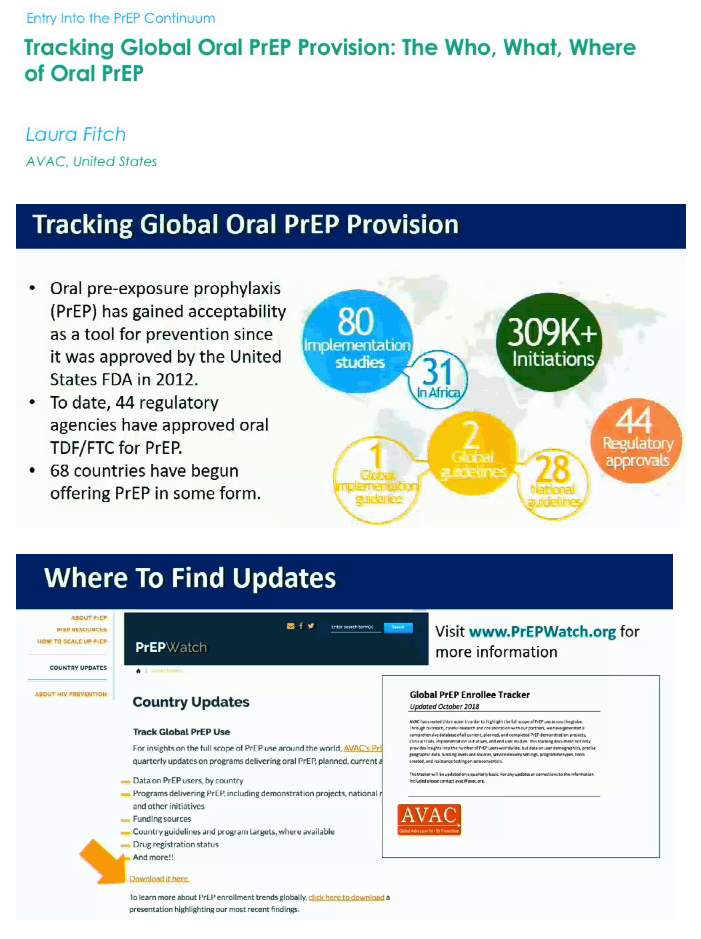
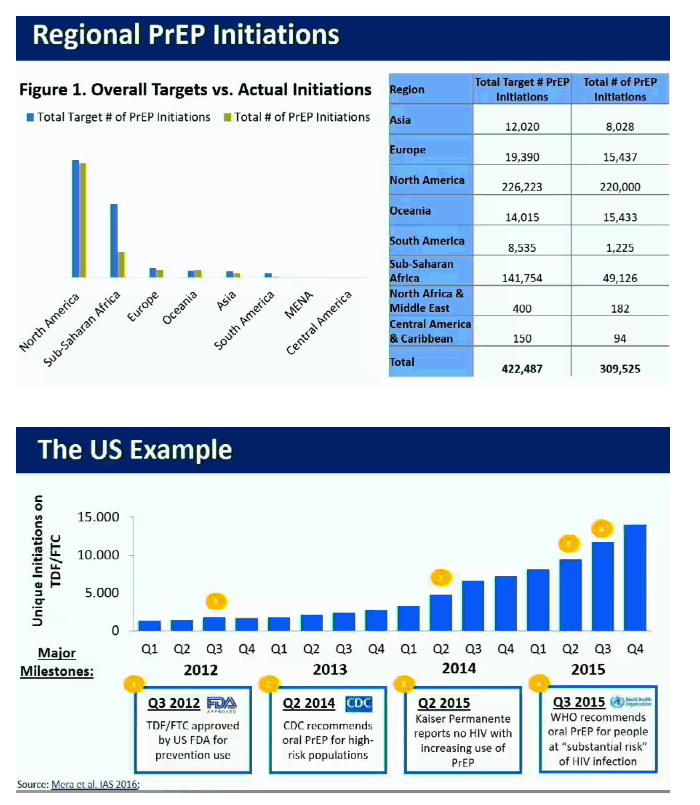
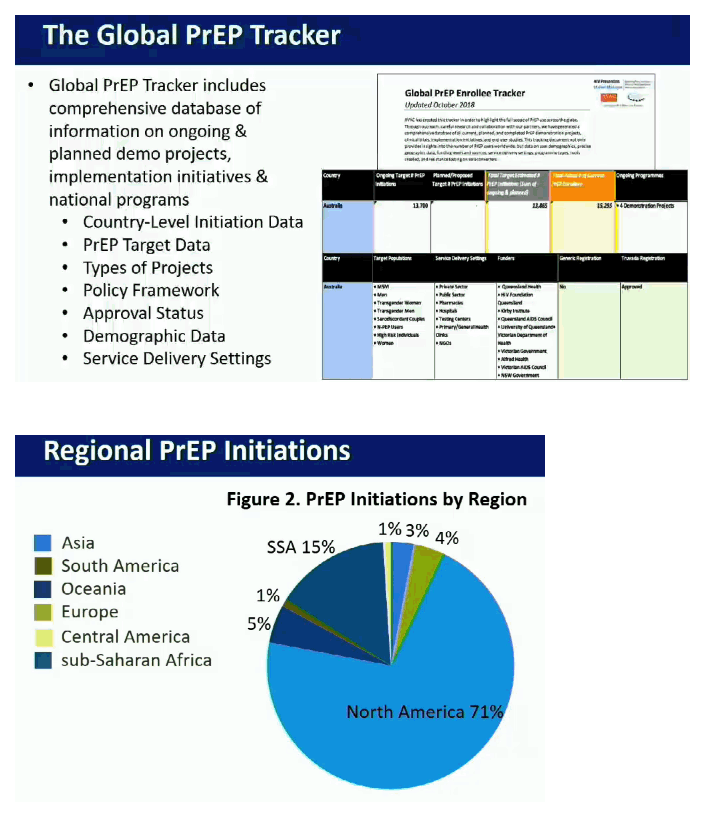
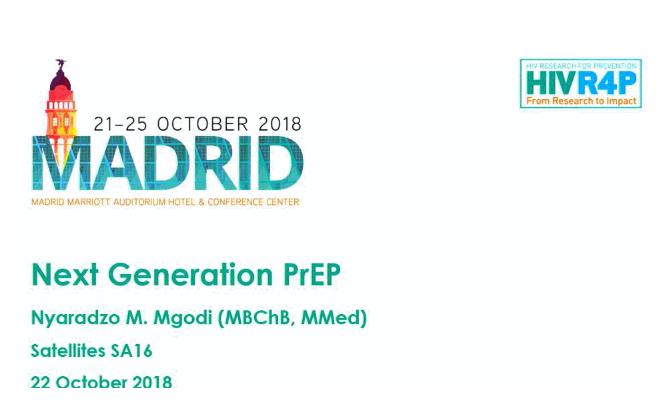
WEBCAST: http://webcasts.hivr4p.org/console/player/40562?mediaType=slideVideo&&crd_fl=1&ssmsrq=1540497695198&ctms=5000&csmsrq=929
By Vicky Wandawa
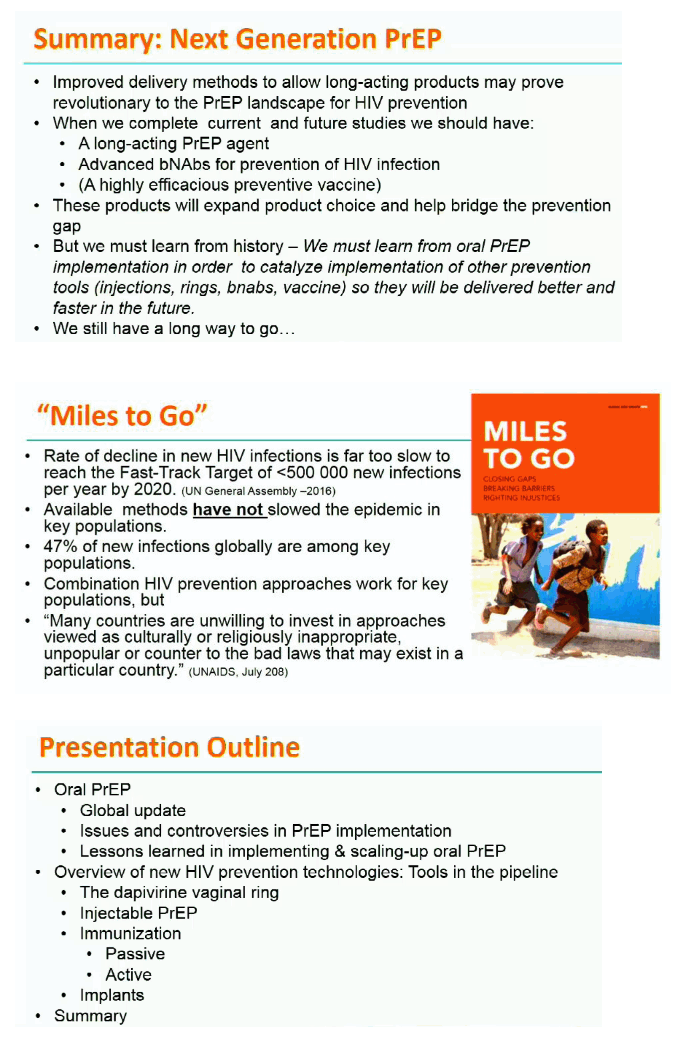
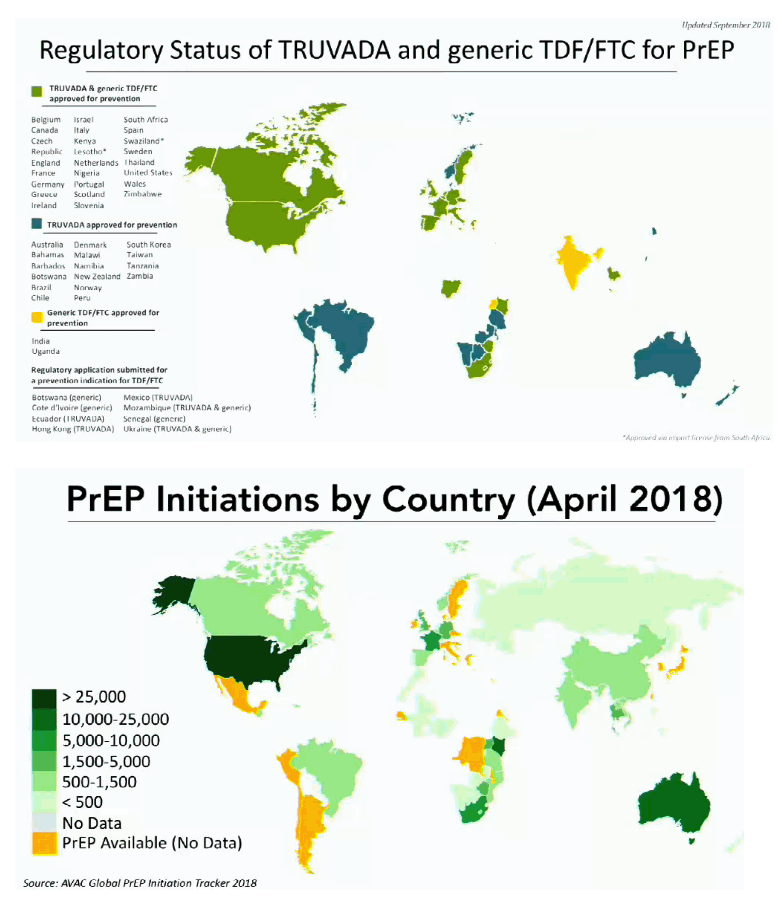
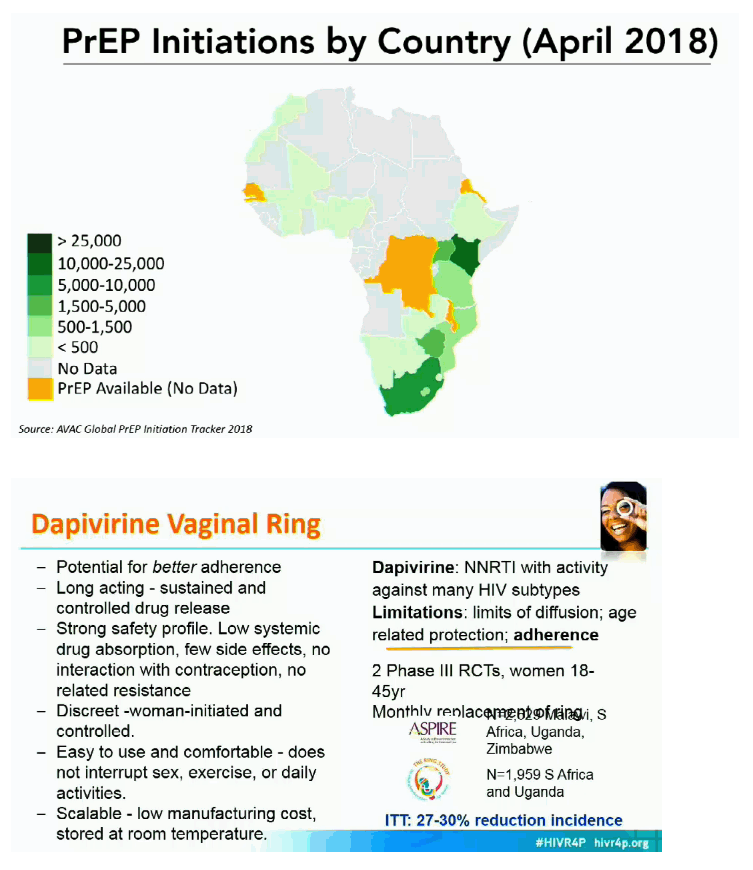
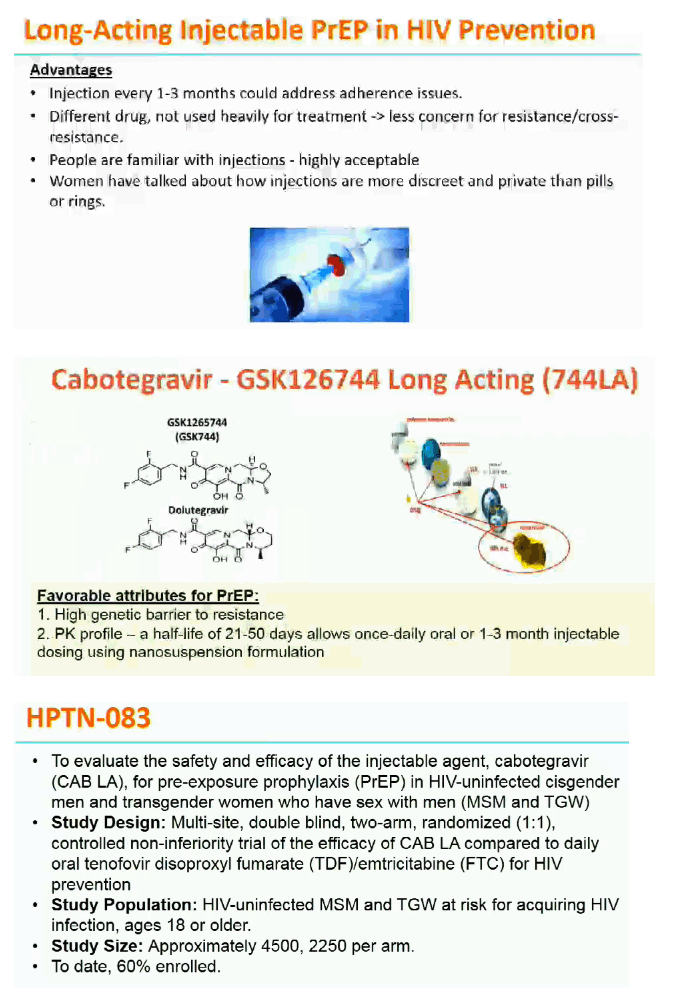
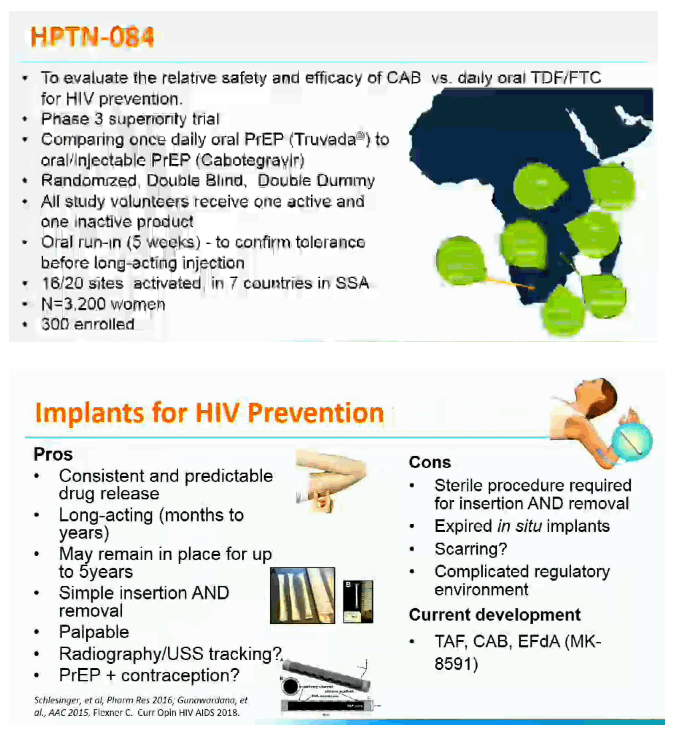
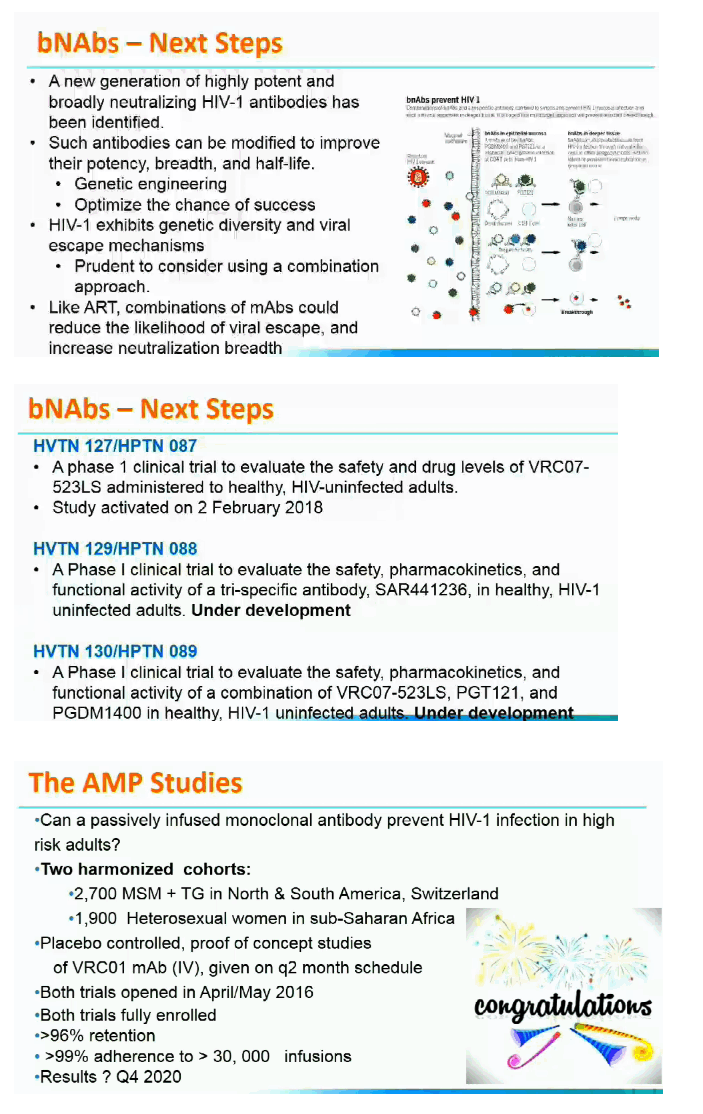
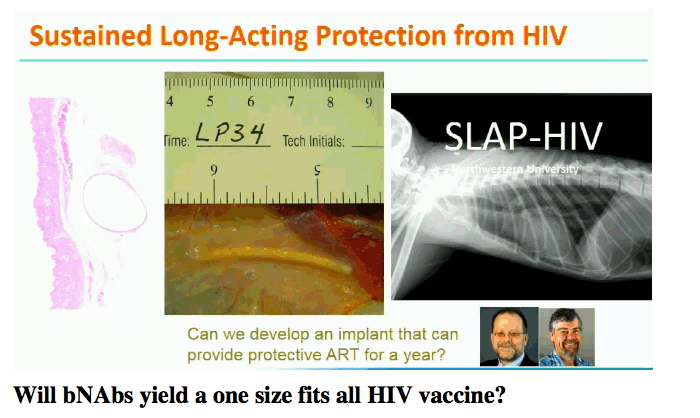
By Vicky Wandawa
https://www.newvision.co.ug/new_vision/news/1488367/bnabs-yield-size-fits-hiv-vaccine
Therefore, the studies are considering the idea of using an antibody made by scientists and giving it to people directly, i.e. using an intravenous (IV) infusion, to prevent HIV infections.
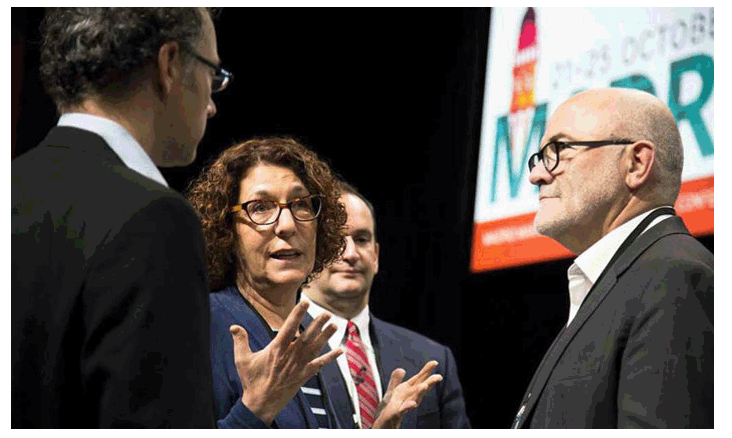
Spain
MADRID-It has been 21 years now and still ongoing-research for the HIV vaccine.
Researchers are now focusing on identifying a particular antibody type that can disarm the virus, by using the broadly neutralizing antibodies (bNAbs).
Speaking at the ongoing global scientific meeting in Spain, Madrid, which is dedicated exclusively to biomedical HIV prevention, Nyaradzo Mgodi, a scientist from the University of Zimbabwe explained that the human body has antibodies, which work to prevent infections or fight foreign bodies.
Consequently, there is ongoing research on how the antibodies can neutralize or 'disarm' the virus.
The antibodies see the virus, bind to it, hence blocking entry into the body cell.
"We have cells in the body, known as CD4, they have receptors. These receptors are where HIV binds. However, the neutralizing antibodies, bind to the areas that HIV uses to attach to the cell. So the virus just becomes neutral, and gets cleaned out of the body.
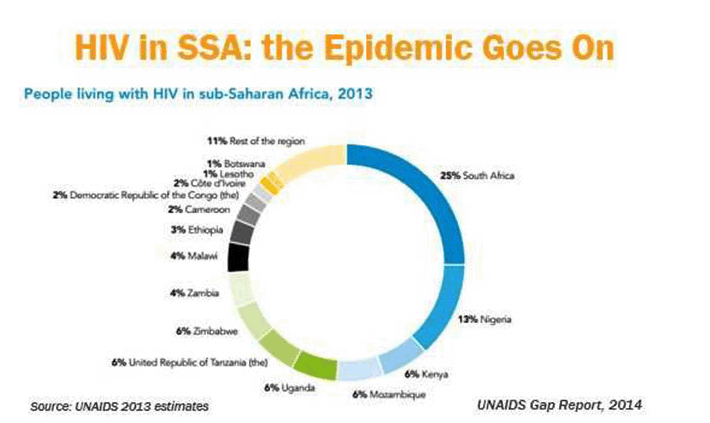
"Without those antibodies, HIV binds to the receptors, gets into the cell, divides and disseminates," Nyaradzo adds.
Therefore, the studies are considering the idea of using an antibody made by scientists and giving it to people directly, i.e. using an intravenous (IV) infusion, to prevent HIV infections.
Currently, part of the bNabs study, is ongoing on among a group of women in sub Saharan Africa. "We recruited 1900 female participants from sub-Saharan Africa to take part in the study. We are doing it in Zimbabwe, Malawi, Botswana, Tanzania, Kenya and Mozambique," she explains.
Women in low and middle-income countries still bear a disproportionate burden of the HIV/AIDS disease, which is the leading cause of death globally in women ages 15-44
It exerts an especially high toll in sub-Saharan Africa, where over half of the 24.7 million people living with HIV-1 infection in sub-Saharan Africa were women and young women are up to twice as likely to be infected as young men. In this sub-population, un-protected heterosexual intercourse is the leading mode of HIV-1 transmission.
The study is being conducted by two groups, the HIV Vaccine Trials Network and the HIV Prevention Trials Network. It is being funded by the National Institute of Health.
Nyaradzo emphasizes that this is not a vaccine but will contribute to vaccine development.
She continues that 24 months from now, we should start seeing results from the study and adds that the bNabs research is significant because despite many advances in prevention and treatment, the global HIV epidemic continues.
Millions of new HIV infections occur every year. The current prevention toolbox is insufficient to curb the epidemic.
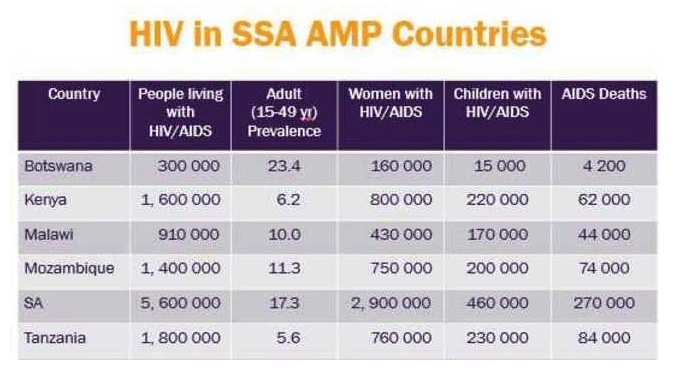
"We cannot treat our way out of the epidemic," Nyaradzo Mgodi, a scientist from the University of Zimbabwe notes.
Furthermore, scientists have isolated bNAbs from people living with HIV who have been found to neutralize or disarm different strains of HIV. Most vaccines induce production of antibodies against pathogens; therefore, studying bNAbs can inform vaccine design.
However, Fred Mukasa Kibengo of Uganda Virus Research Institute is skeptical about the bNAbs that are being developed, regarding their effectiveness in the various sub types of HIV.
"bNAbs targeting a single sub type of HIV are not likely to work, and what is likely to work is to find bNabs responding to the different sub types," Kibengo says.
Nonetheless, Makerere University Walter Reed Project (MUWRP)'s Francis Kiweewa remains hopeful about the efficacy of bNAbs by siting an example of the current anti-retroviral therapy in use today.
"The first drugs ART drugs we are using today were tested on individuals with HIV sub type b, for example AZT. But these are the same drugs that are working for all the sub types now, so this keeps my hope in bNabs alive," Kiweewa notes.
"All these drugs were tested on patients in Africa, after having been proven to work in America, before they were rolled out to other places. And when rolled out to other areas, these drugs continued to work."
He notes that during the early studies, the sub type that the research targets may not be vital, since the key result needed is proof of concept, after which adjustments can be done where necessary to suit the different sub types.
|
| |
|
 |
 |
|
|